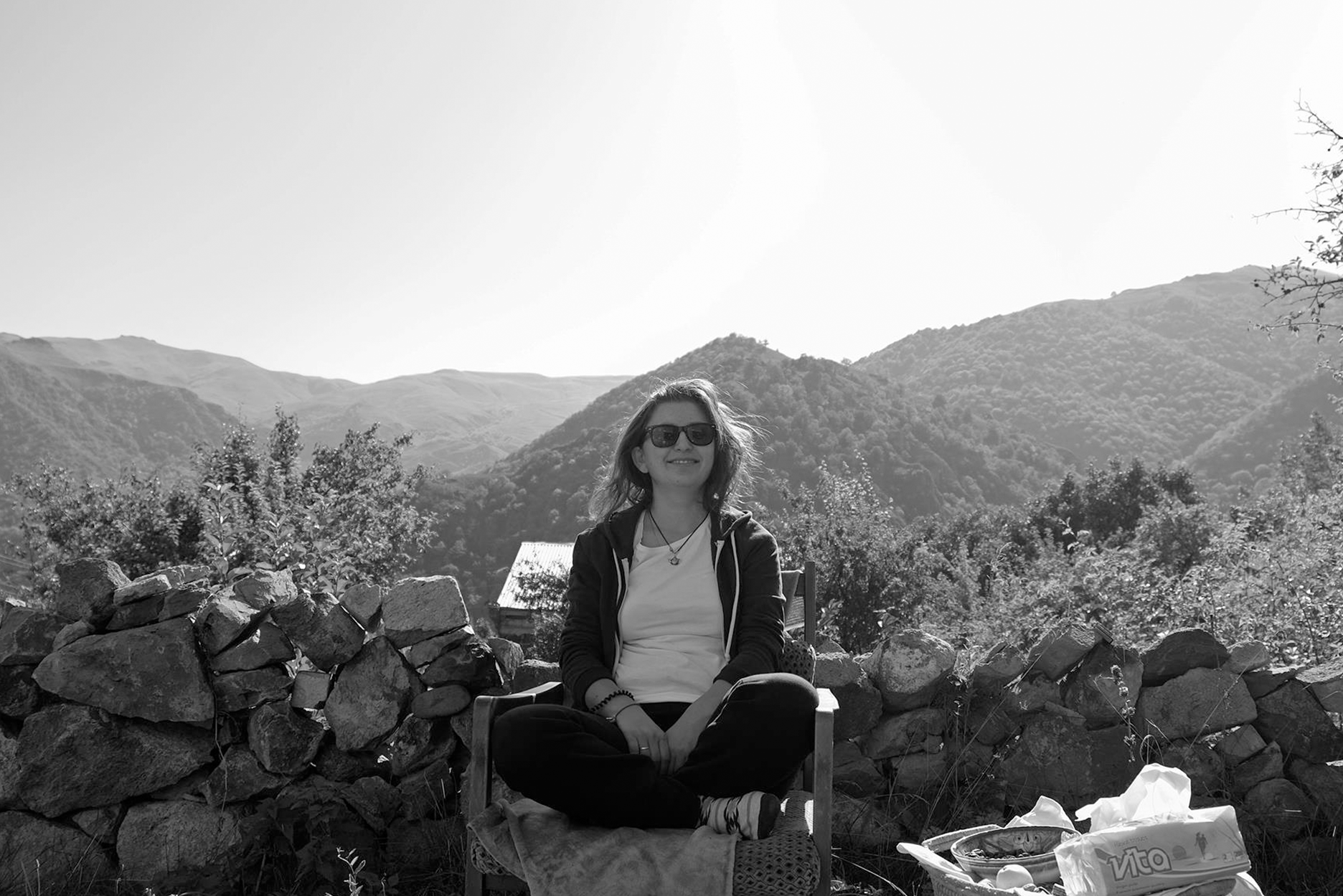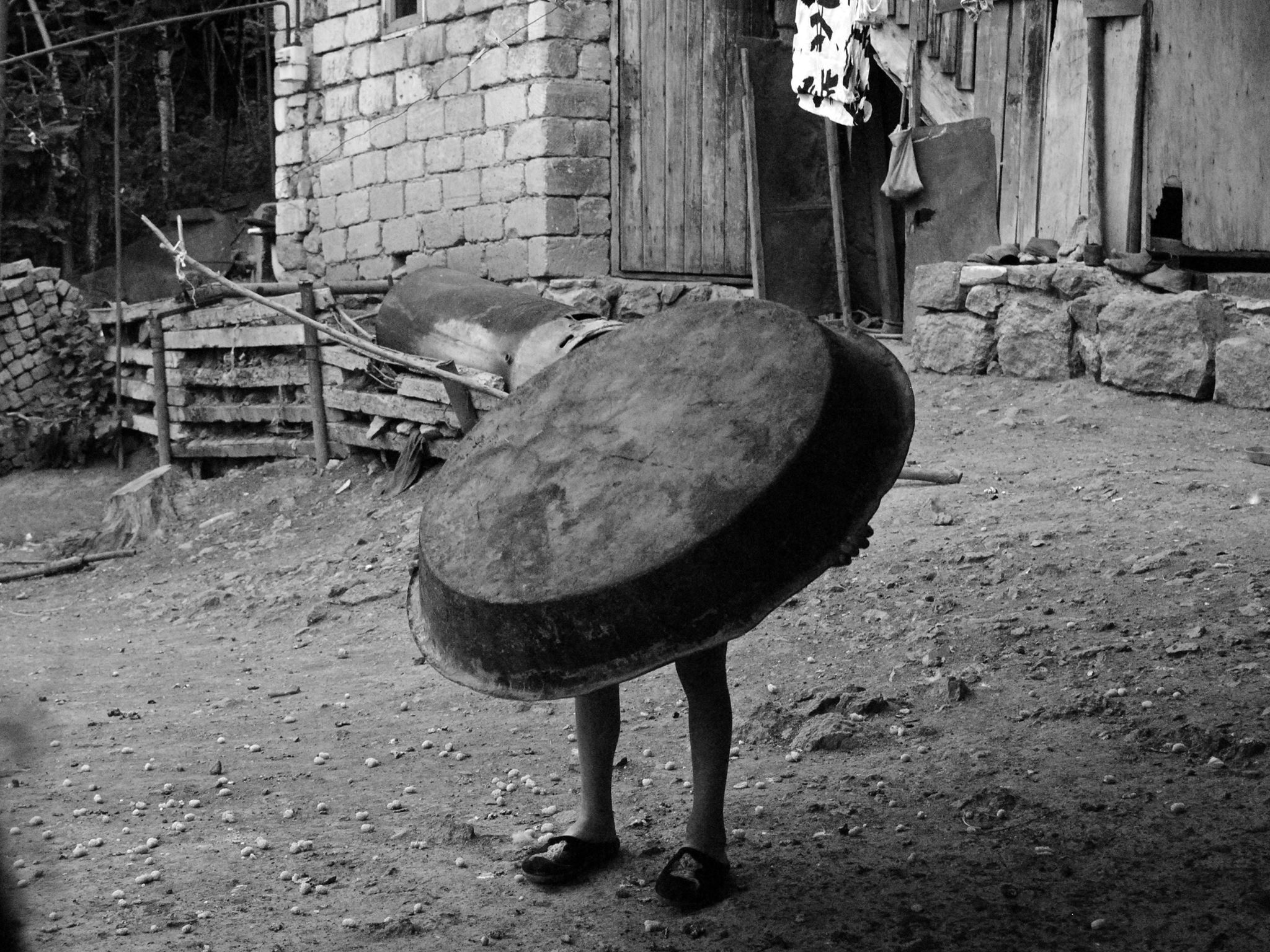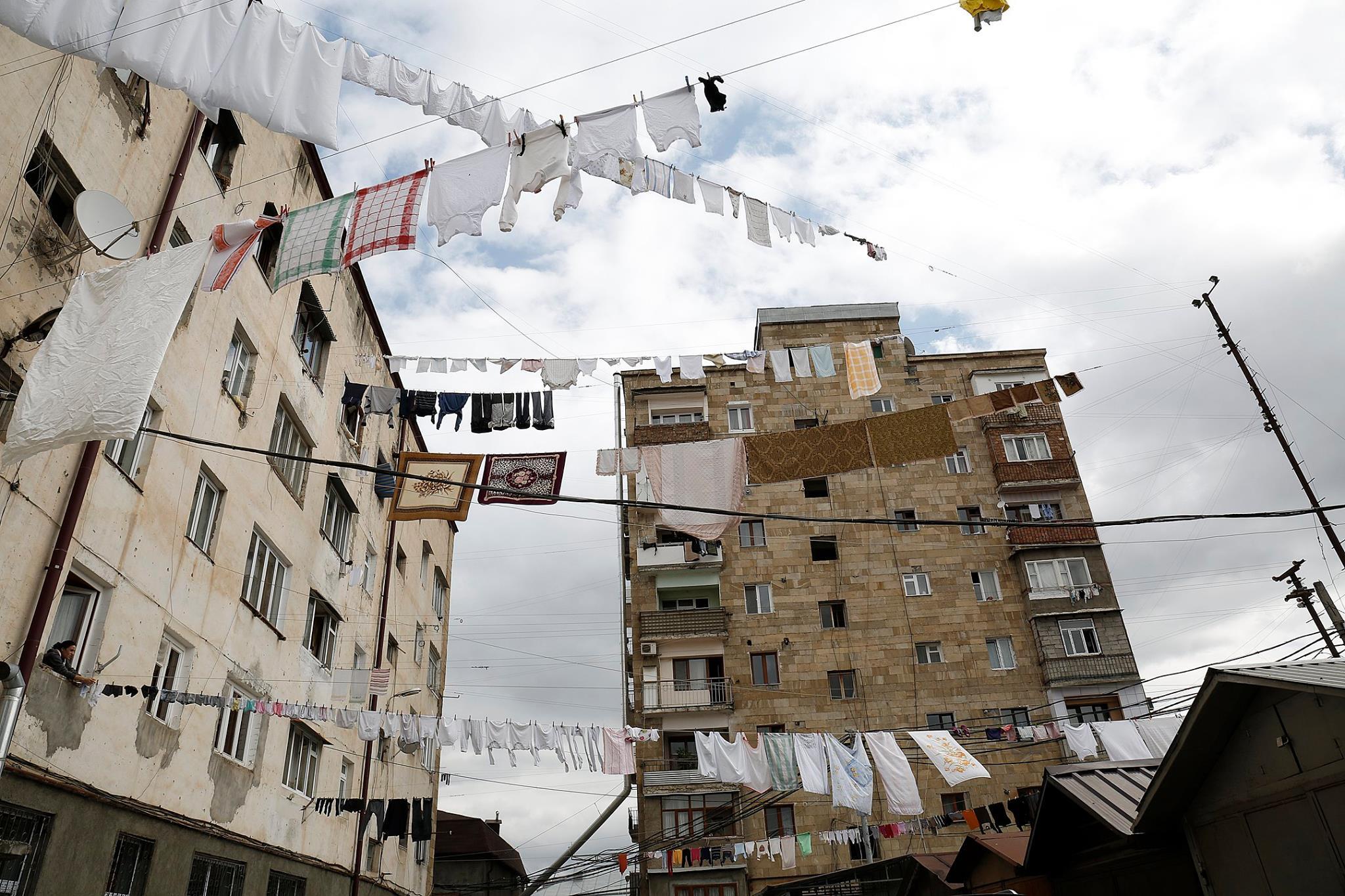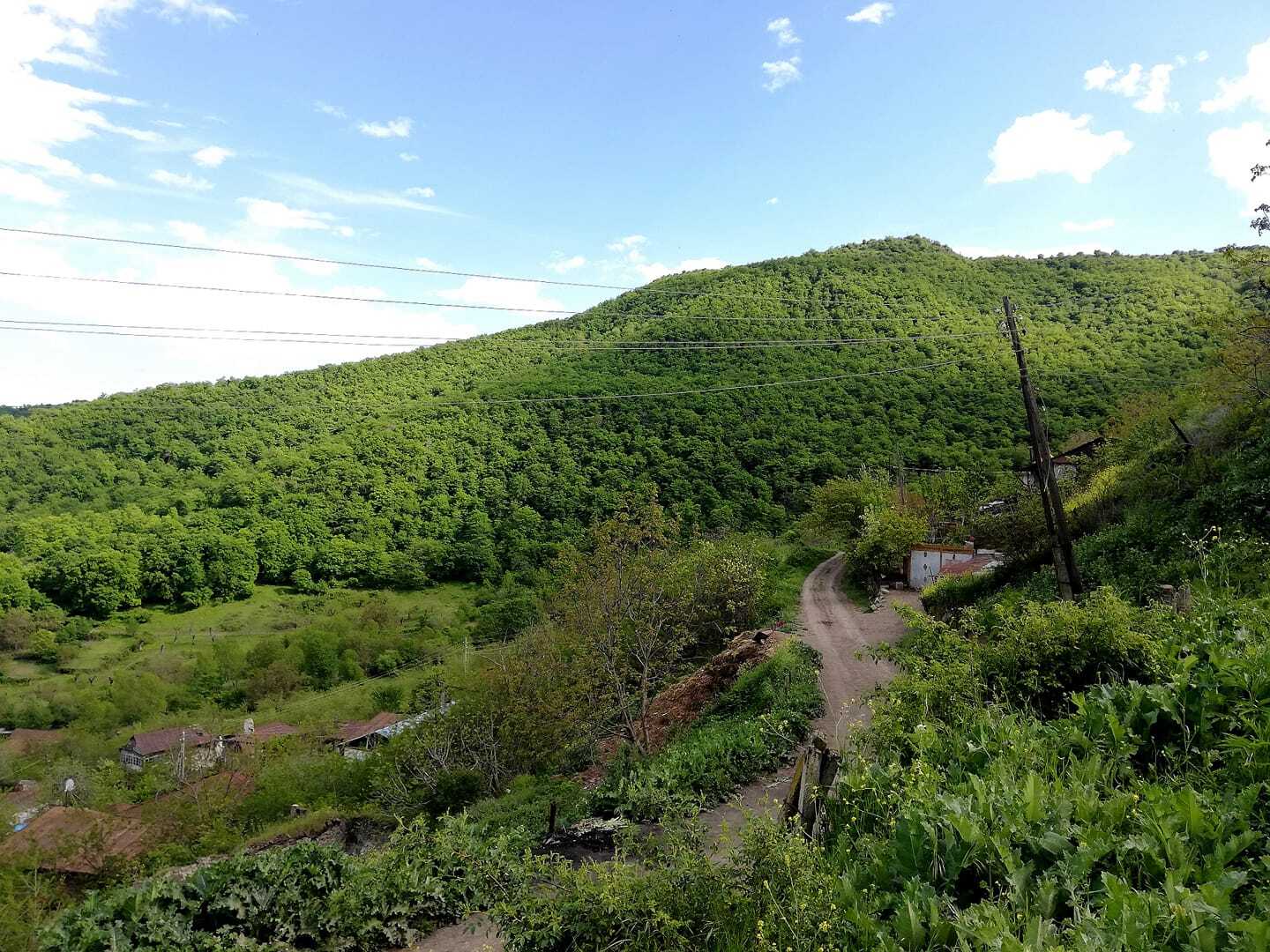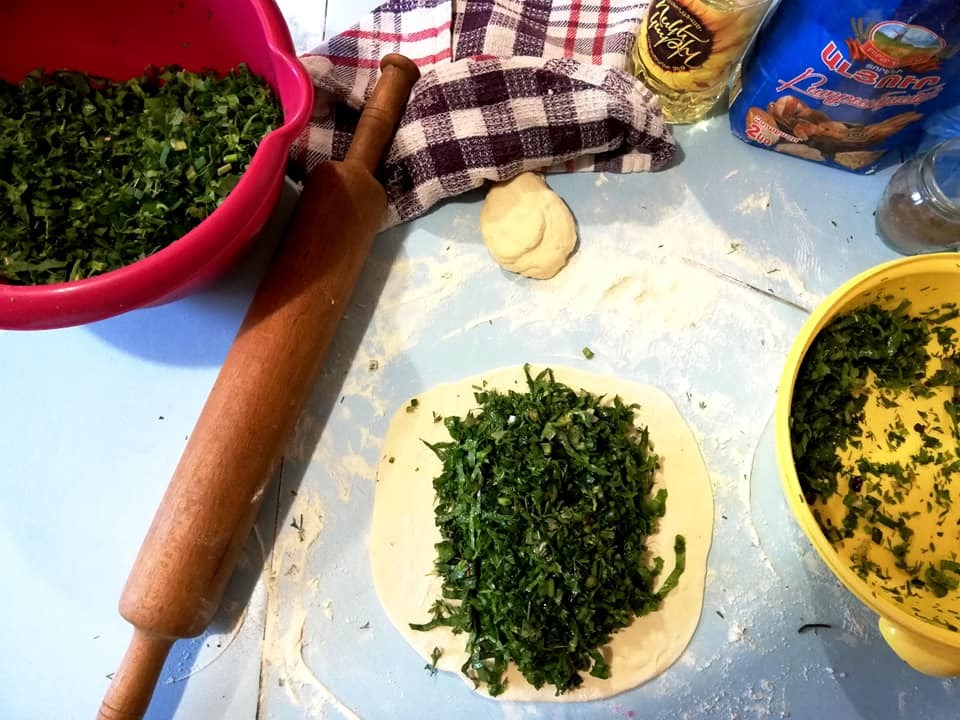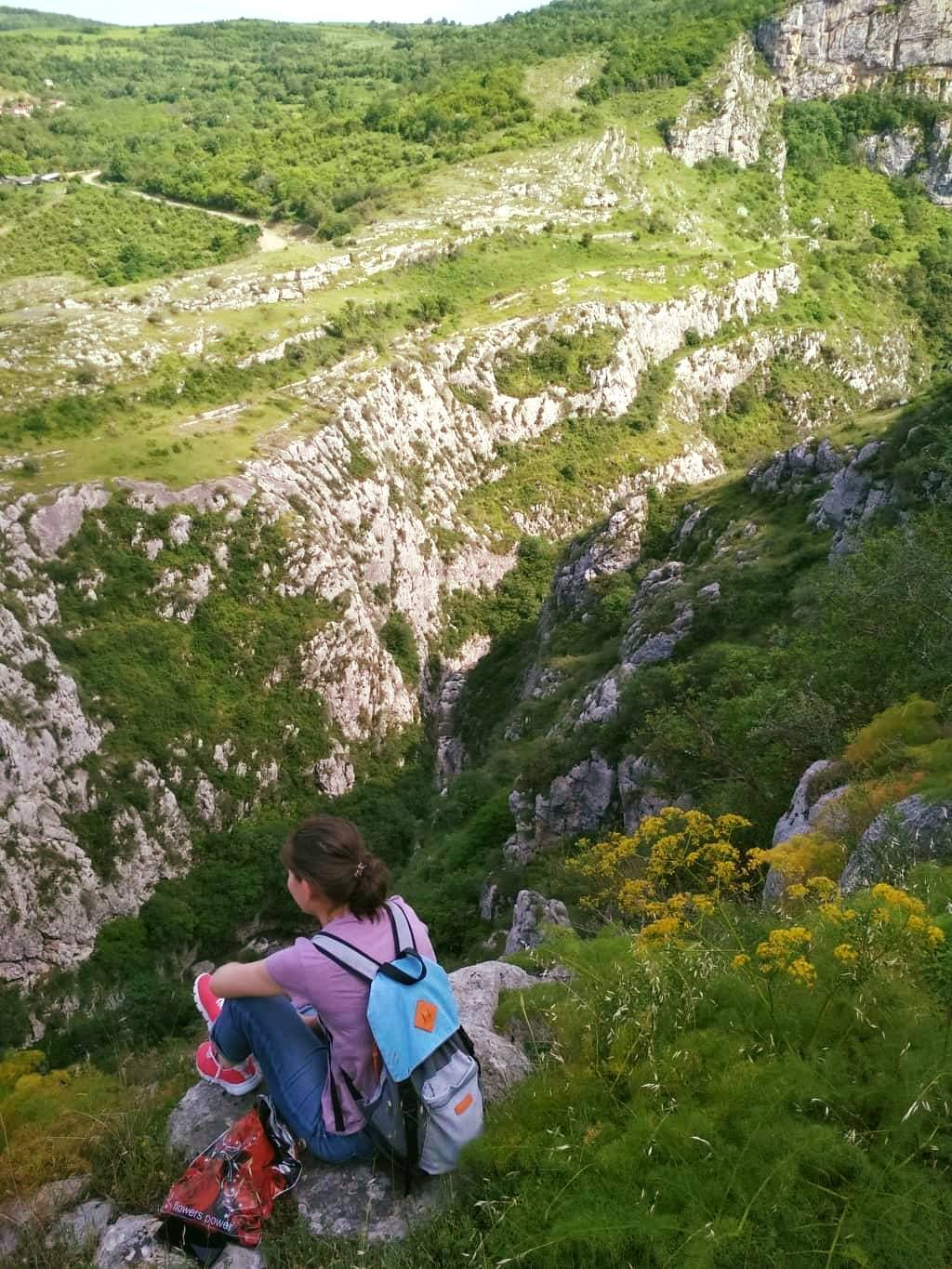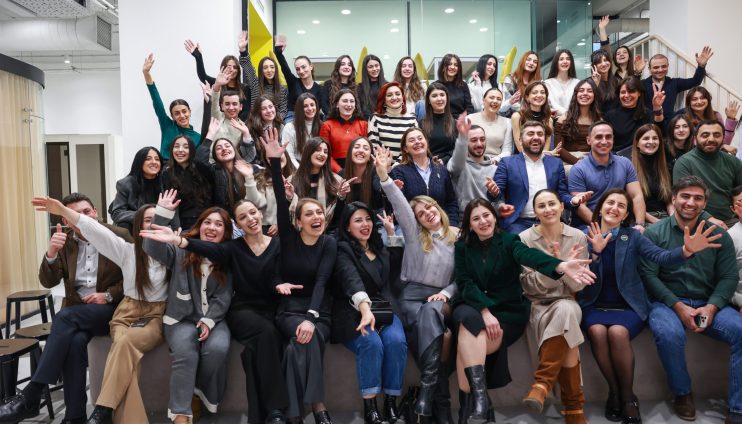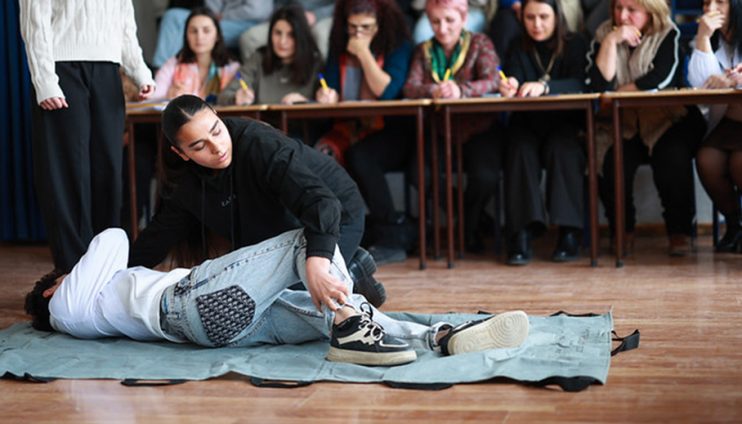COAF’s team reflects the geography of Armenia and the diaspora. We have someone from everywhere. Knar is our Artsakh.
A reporter by profession, a photographer, and a big fan of Armenian dialects – meet Artsakhtsi Knar Babayan, whose ringtone is “Al Ayloughs” by Komitas.
A kid with a bowl. One of Knar’s favorite self-taken photos in Artsakh.
October is over, and it seems like it never happened. The war we have been in for over a month has frozen our sense of time.
When the war began, passing by Knar at the office felt like passing by Artsakh, the Artsakh that was in a severe and cruel war that does not pity anyone and anything, even the most beautiful stories that should have been in books. Knar was “peaceful” and strong, just like Artsakh.
My home, my place
“My home my place” («Տոնս-տեղս») she often writes on her social media posts about her homeland and its people.
“What is Artsakh for you?” I ask her, trying to imagine everything she describes me – someone who hasn’t been to Artsakh yet.
Long followed silence tells me she knows the answer very well, but the latter comes from deep in her soul full of emotions of a terrible month – emotions she hardly dares not to control. She remained silent and then said in an audible whisper, “Maybe it’s the mountains.”
The road to Gishi village.
For Knar, Artsakh is her home, her small and endless place. Her family has three houses there: one in Martuni, the town she was born in, one in Gishi village, where they have bushy gardens, and her own small but warm studio in Stepanakert.
“I lived the happiest days of my life in my Stepanakert apartment,” she smiles, describing every detail she has created there on her own – her kitchen, where she used to make pasta, jingalov hats, steamed greens, and real Artsakhian tomato omelet.
The art of making Jingalov Hats.
She welcomed people from all over the world at her place: journalists, photographers, friends, and friends of friends. “We used to gather and drink Kataro (wine that is produced in Togh village of Artsakh). We used to call my house “the lair of anarchists”.
The déjà vu of the thesis
The topic of Knar’s university master’s thesis was about life in the rear during the Artsakh Liberation War – “Artsakh War in the eyes of women and children”. She has met many widows and mothers of fallen soldiers and heard dozens of stories about the 90s war, during which she was a 4-5-year-old kid.
“Everything I see now reminds me of my thesis – same stories but ”staged”.
She has always admired how strong the grieving mothers are, “They seem to be a withered river after the war. Years pass, and you see them flourish and live again. How much can one love life to be able to do so?” she wonders.
You shouldn’t say the word “father”
“My Mom taught us not to mention the word “father” among our agemates. She was telling us that one could never know whose father would die in the following hours,” she remembers the taboo of wartime and the childhood “commandment” she still follows as a grown-up.
***
Knar in Hunot Canyon (Artsakh).
Nowadays, Knar’s every new day begins with a call to her father in Artsakh, “How was the night? Did you have a concert there? How was the music? Jazz, folk, hard rock?”
And while the concert goes on, this is just a bad dream for Knar. Stepanakert and Shoushi look as they did before. She will go there again, see her mountains, stare at them, and wonder, “How come can anyone disrupt this peace?”

